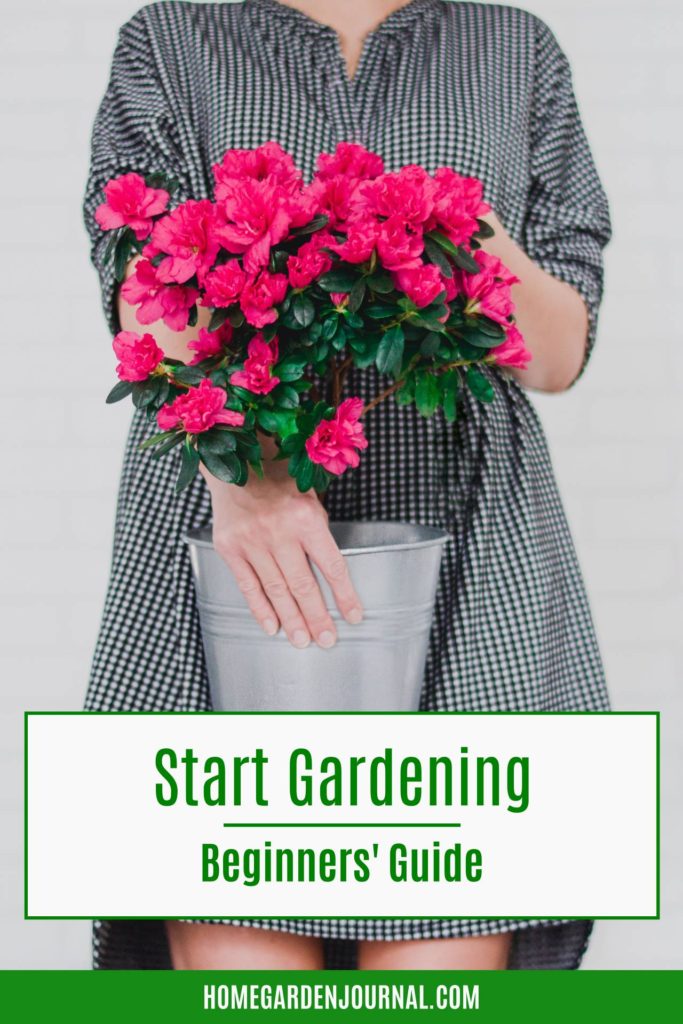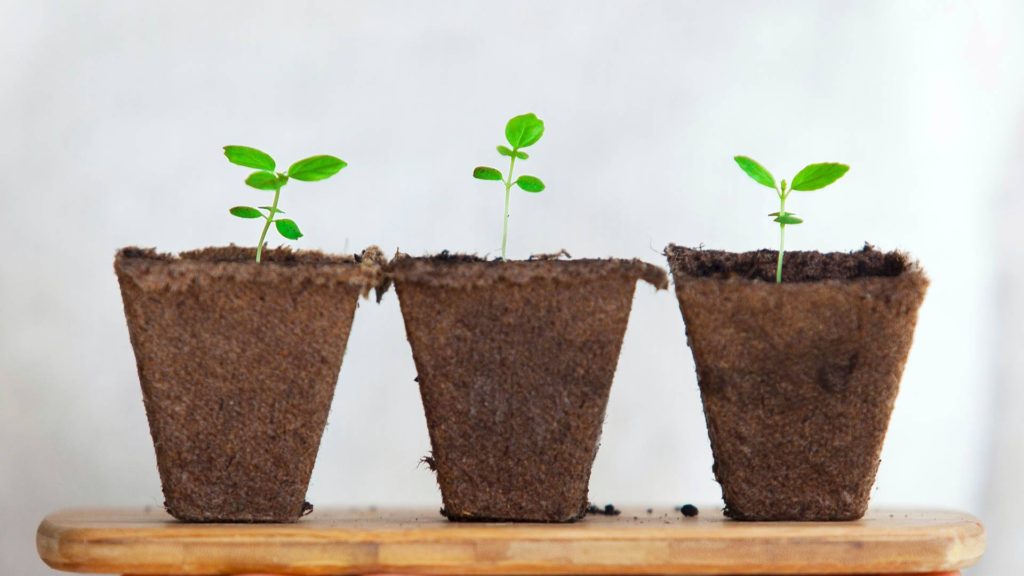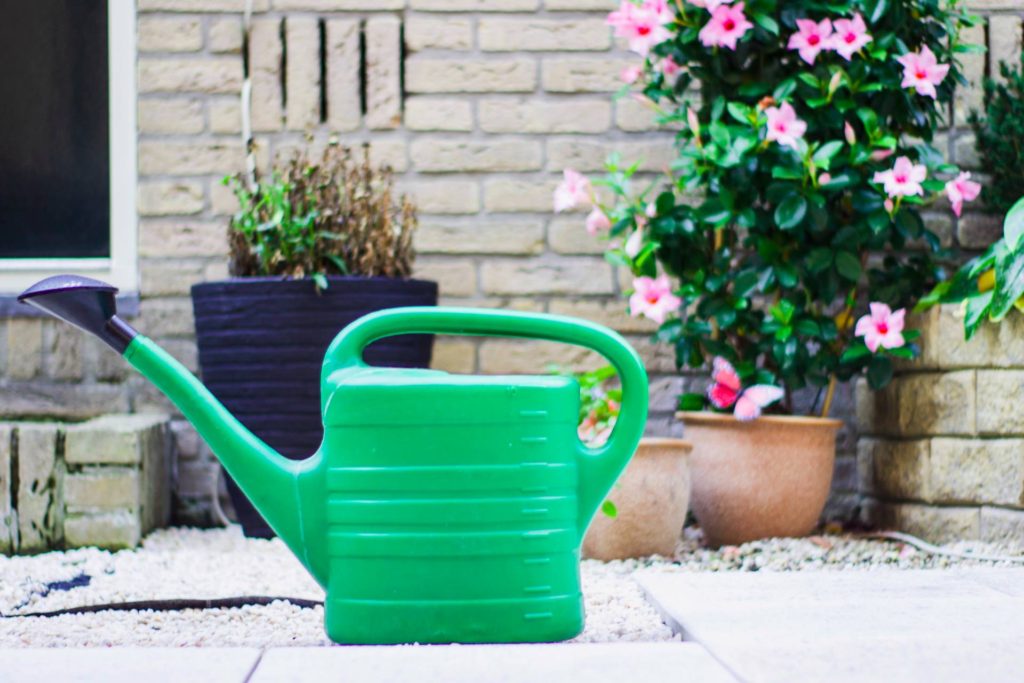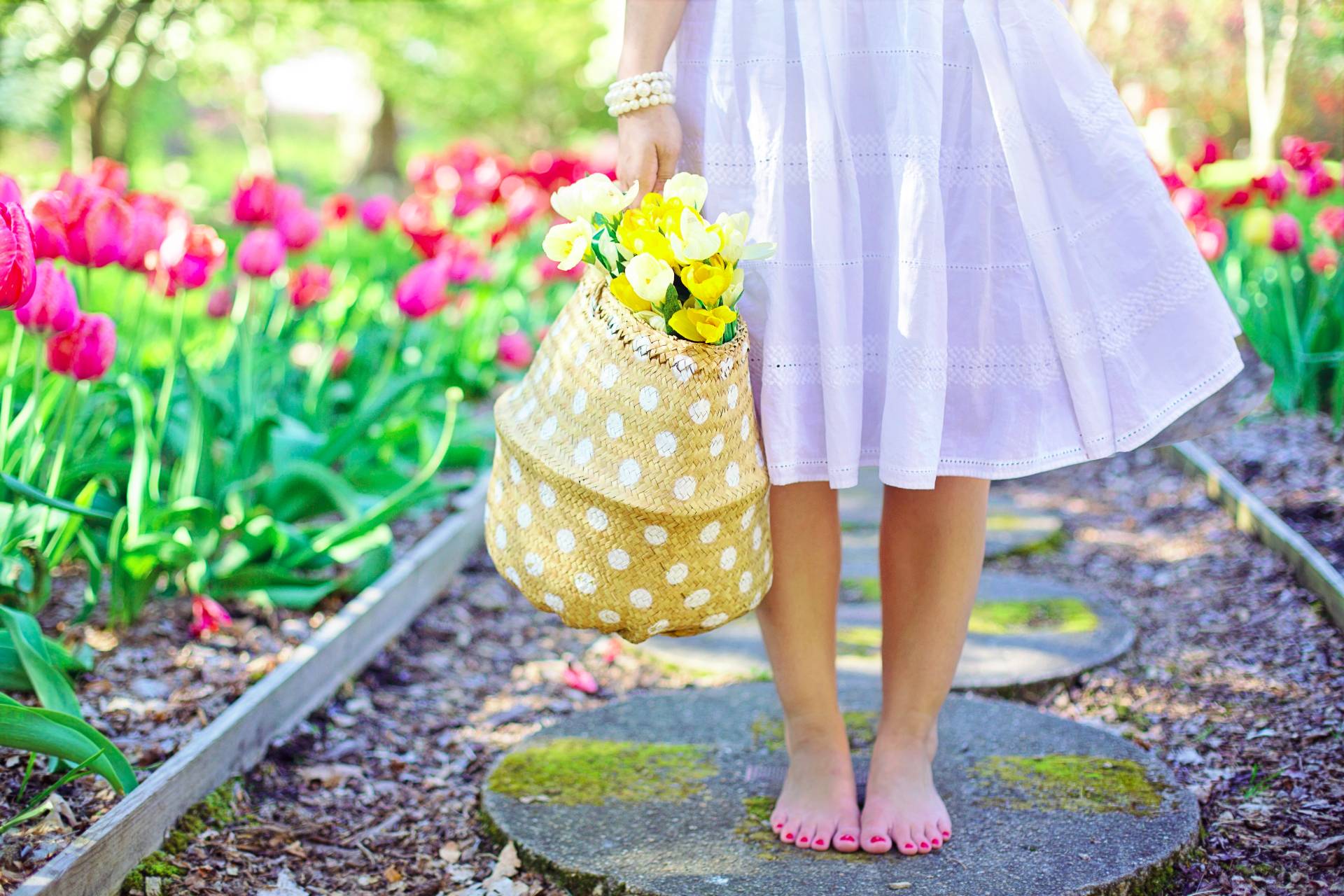Starting a garden is a great hobby / vocation to improve your home and connect with nature. Gardening also helps you to grow your own food and herbs.
Want to start gardening? First, give yourself a pat for taking the decision to start a garden. Not sure how to start gardening? In this article, we will cover the basics of gardening. Let’s check how to prepare and start gardening at your home.

Get ready to enjoy the beauty of flowers, hear buzzing of bees, and taste seasonal fruits, vegetables and herbs from your own backyard.
What to Grow in Your Garden
Why do you want to start gardening? Gardening can be for flowers, fruits, vegetable and herbs.
Most house gardens have seasonal flower plants and shrubs. If you want to start gardening to make your house beautiful, stick to seasonal flowers and plants.
A kitchen garden provides seasonal vegetable, fruits and herbs. When the objective is to supply your kitchen with fresh vegetable and herbs, pick the vegetables and herbs you like. Only grow the crops that you eat. Select the fruits, vegetables or herbs that your family enjoys.
Of course, you need to factor in your soil and climate when deciding what to grow in your garden. Select plants that are best suited to your area. Space availability should also be considered. Don’t pick a crop that requires lot of space when you have a small backyard or just a balcony.
Where to Start Your Garden
Select the location where you will start your garden.
Your house backyard is best suited for a kitchen garden, while your front lawn can be used for ornamental flowers and fruit bearing plants that also add to aesthetics of your house.
Growing vegetables in your front lawn works best in your backyard unless you are comfortable with pumpkins covering your lawn.
Don’t have any open area such as a front or backyard? You can start a garden even without any open area. Terraces, balconies and any area in your house that gets plenty of sunshine can be converted into a garden. Potted plants and vertical gardening can be used when space is a constraint.
Most fruits and vegetables need full sun, with 5-6 hours of direct sunlight daily for fruiting. Greens, herbs and root veggies grow in partial shade. Some plants are well suited for indoor gardening and can sustain with minimal sunshine.
Plan Your Garden
After having decided on the location and plants that you want to grow, you need to plan your garden. Depending on your space, you can need to plan a backyard garden, container garden or a vertical garden.
For a garden in your front or backyard, measure the available area. Take a paper and create a plan for your garden rows. Create your garden rows. Raised beds require more watering due to soil being exposed to air. However, it does provide more air and helps with certain crops such as radishes. For very dry areas, sunken beds help retain moisture.
Backyards should be designed in blocks (beds) instead of rows. Each bed should be 3-5 feet wide and separated by a narrow passage. Keeping long and narrow beds allows you to reach crops in the middle. Your beds should be 6-10 feet long.
Backyard kitchen gardens should be designed in a grid pattern with narrow passages to limit walkways and maximize developing space.
Where you have small space or utilizing a balcony, arrange your planters and containers vertically. Make use of tiered elevated garden bed planter box to put your plants at different levels to allow sunshine to all of them. A vertical planter along walls make the best use of space to grow more plants. A vertical garden brings more plants into much less space. Consider self-watering planters if you aren’t going to be available for watering your plants regularly.
Invest in Garden Tools
Right equipment make gardening easy. Gardening tools and planters are required when you want to take up gardening seriously. You will also need to purchase plants, seeds and seedlings for your garden.
Basic gardening tools include:
- Garden hoe
- Garden shovels
- Hand pruner
- Hand rake
- Water hose
- Gardening gloves
Buy good quality gardening tools and avoid low-cost equipment. Shop for metallic tools, preferably with a wooden handle. You can find gardening tool set for beginners online or in your neighborhood gardening center. Select right-size equipment that are comfortable.
Test Your Soil
Conduct soil testing to understand your backyard space. Soil composition and nature is important for your garden plants and crops. Recognize your backyard soil.
Check the soil pH levels: acidic, alkaline or impartial. How is your soil: sand, clay, silt, or rocks. Does it have a desirable quantity of simple nutrients? Are there potential pollutants or contamination sources?
While soil texture and composition is visible by looking at the soil, its nutrient and pH levels require domestic or laboratory tests.
Acidic or alkaline soils will need to be treated properly for a balanced pH level or around 7, which is ideal for most plants. Some crops and plants prefer slight acidic or alkaline soil.
Prepare Your Soil
In the beginning, you need to put in extra effort and prepare your backyard soil for gardening. Dig up the soil in your backyard to get rid of compacted soil. Break large chunks and turn the area into aerated soil.
Soil must have certain level of nutrients and composition. Test the soil and prepare it for gardening. If your soil is too sandy or lacks humus, add garden compost. You need to add fertilizers to balance the level of nutrients. Select organic sources for plant nutrients.
Water the entire area after digging and adding compost. Let the water dry up and then dig up the soil again. Once your soil is ready, you can make beds and rows to start gardening.
Your soil texture and quality improves with each gardening season. Use leaves and plants to prepare compost and keep adding them to your soil.

Seeds & Transplants
Once your soil is ready, you need seeds and transplants for your garden. You can buy seeds and transplants from your local garden center or nursery. Seeds and plants are available for purchase online too.
For the complete gardening experience, you can grow your own seedlings for transplant. You can grow your own seedlings for transplant. You can use special seed starter trays or planters. Alternatively, you can prepare a thin layer of soil bed on cardboard or plastic sheet.
Buying transplants from a nursery? Don’t buy large plants. Pick transplants where plants are no bigger than the pot height. Big plants in small pots often result in tangled roots.
Plant Your Garden
Got your seed or transplant? It’s time to plant them in your garden beds. Seed packets and transplant containers generally have planting instructions.
Plant your seeds in the prepared beds and water them properly. Don’t flood them. Keep the soil moist until seeds germinate and plants gain some strength.
When transplanting, dig up a hole in the bed. The hole should be deep enough to have the planter and soil in one level. Place your plant and cover it up with properly grounded soil. Water the plant to provide adequate moisture. Keep the plant soil moist until the plant holds root.

Nurture Your Crops
Garden loves your care and regular attention. Keep an eye on your plants and maintain the right moisture levels in your soil. Look at any weed growth or insects. Kill weeds when they’re small with a scuffle hoe.
Excessive watering can damage your plants. Depending on the plant, you need to keep the soil moist or barely moist. Too much of water can make seeds and roots rot.
Insects and slugs can invade your garden. Check for any signs and use natural remedies.
Reap the Fruits
The best part of gardening is to watch your flowers bloom and plants to bear fruits. Harvest your crops at regular interval. For tubers and roots, you need to understand when to harvest. Potatoes, radish and tubers needs to be harvested when ready. Uprooting too early will only ruin your crop. Harvest your crops early in the morning for the best taste.

